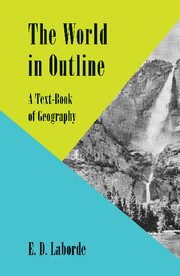Summary
IN the geography of North America the interest centres round two points: the compactness of the physical regions and the transplantation of Western European civilisation to a new environment. The continent includes all the physical regions known to the Old World, but packs them together so closely that, for instance, in the couple of hundred miles between New York and Savannah every kind of temperate and subtropical product can be had, while a few miles farther south brings in the tropical region of Florida. No other land mass offers such advantages owing to the closeness of climatic belts. Then, again, the peopling of North America by Europeans has been a great human experiment of which the results are not yet fully evident. Leaving their Old World homes while Europe was in the flush of vigour, the settlers occupied an almost empty land, transferred to it the culture and civilisation of their homeland, and built up those new nations overseas. But inevitably geographical and historical factors have influenced the growth of these ‘young’ peoples and given to them features which distinguish them from their parent stocks.
Position and Size. North America is joined by the Isthmus of Panama to the southern continent of South America, the two land masses combining to form the New World. This is conventionally regarded as being to the west of the Old World, since the prime meridional is by international agreement the one which passes through Greenwich. North America lies wholly in the northern hemisphere, extending from Lat. 8° N. in Panama to within a few degrees of the pole in Greenland and the Arctic archipelago of Canada. Roughly triangular in shape, it is washed by the North Atlantic Ocean on the east, the Pacific on the west, and the Arctic Sea on the north. The widest part of the triangle covers about 120° of longitude, but the average is 50°. New York is in Long. 74° W. and Vancouver in Long. 130° W., the distance between them being about 3000 miles. The great longitudinal breadth has necessitated the establishment of five belts of standard time, as shown in the accompanying map.
- Type
- Chapter
- Information
- The World in OutlineA Text-Book of Geography, pp. 265 - 282Publisher: Cambridge University PressPrint publication year: 2013



